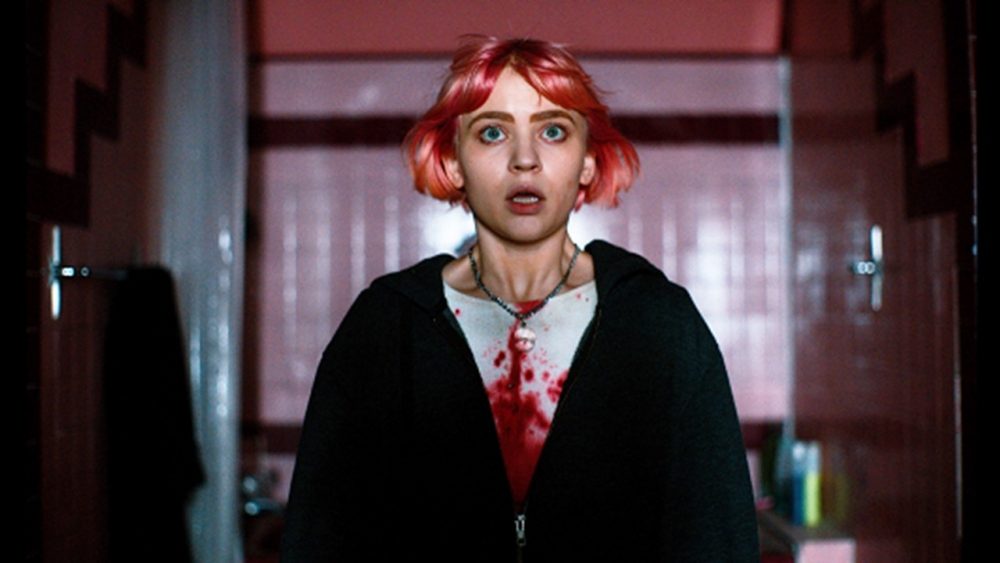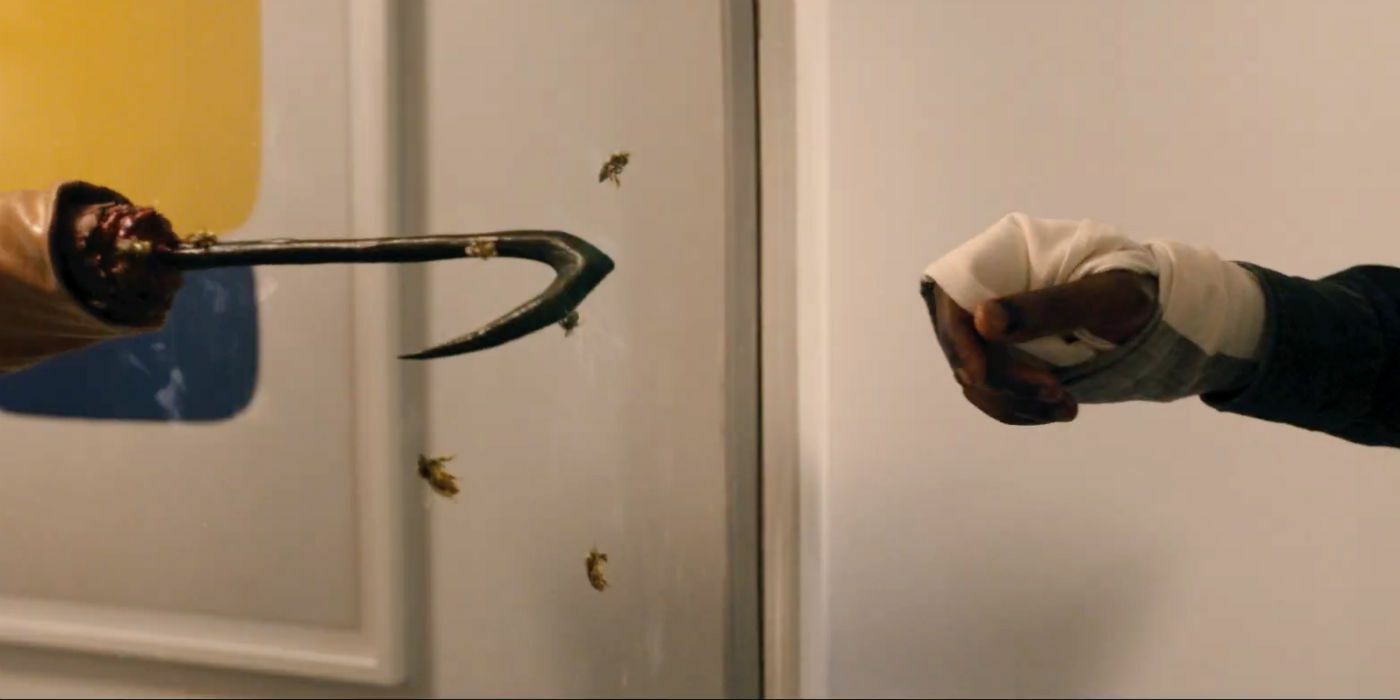We Need to Do Something
by Hope Madden
We’ve all felt a little trapped lately. But the pandemic was completely different depending on your situation. Were you trapped and utterly alone, like Bo Burnham? Because that seemed sad and reflective, funny and inspirational and wildly successful. (See Inside if you haven’t.)
Or were you trapped with your family?
We Need to Do Something is a parable about being stuck for a long time with the people you know best and were probably sick of in the first place. The world outside your doors offers a high possibility of death, but the world inside might be even worse.
Parable is a strong word. We Need to Do Something is a nightmare.
Mel (Sierra McCormick, The Vast of Night) made it home from her friend’s house just in time to miss the tornado. Her mom (Vinessa Shaw) ushers everyone —Mel, her little brother Bobby (John James Cronin) and their dad (Pat Healy) — into the safest room in the house, the bathroom. Here they will wait out the storm.
The storm damages the house, and they are pinned in. Days go by. Why hasn’t anyone come for them? Why is their dad such a dick? What are those noises outside the door?
Director Sean King O’Grady, working from the screenplay Max Booth III adapted from his own novella, mixes claustrophobic dread and adolescent angst with few enough contrivances that he never loses your interest.
Hints dropped early in the story come to hideous life later on (as ugly secrets sometimes do at things like family holidays and vacations or when you’re stuck for a long time in the bathroom). And though the “theater of the mind” component, piquing interest in what exactly lay outside that door, could be stronger, the performances are enough to keep your attention.
Healy, in particular, delivers a characteristically unpleasant performances, feeling very much like a trapped rat.
The hallucinogenic subplot about guilt and trauma and adolescent experimentation with pink goth suggests that the more time you spend with your parents, the more overwhelmed you’ll be by nameless shame and guilt. That feels right.
There’s no real story here. The whole film is essentially Act 2: no catalyst, no resolution. That doesn’t make for a deeply satisfying story, but it does feel a lot like the pandemic.














